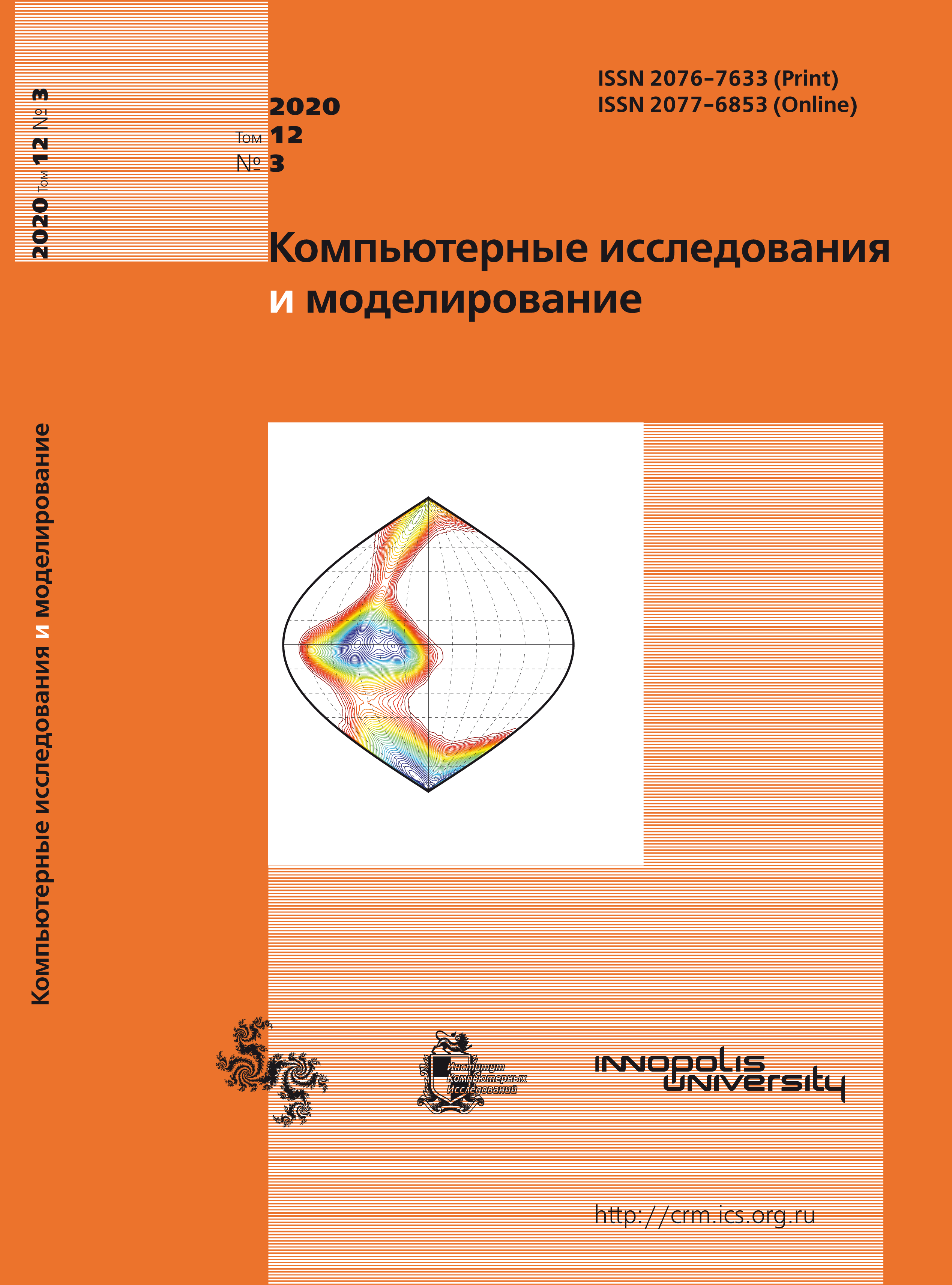All issues
- 2025 Vol. 17
- 2024 Vol. 16
- 2023 Vol. 15
- 2022 Vol. 14
- 2021 Vol. 13
- 2020 Vol. 12
- 2019 Vol. 11
- 2018 Vol. 10
- 2017 Vol. 9
- 2016 Vol. 8
- 2015 Vol. 7
- 2014 Vol. 6
- 2013 Vol. 5
- 2012 Vol. 4
- 2011 Vol. 3
- 2010 Vol. 2
- 2009 Vol. 1
A modified model of the effect of stress concentration near a broken fiber on the tensile strength of high-strength composites (MLLS-6)
The article proposes a model for assessing the potential strength of a composite material based on modern fibers with brittle fracture.
Materials consisting of parallel cylindrical fibers that are quasi-statically stretched in one direction are simulated. It is assumed that the sample is not less than 100 pieces, which corresponds to almost significant cases. It is known that the fibers have a distribution of ultimate deformation in the sample and are not destroyed at the same moment. Usually the distribution of their properties is described by the Weibull–Gnedenko statistical distribution. To simulate the strength of the composite, a model of fiber breaks accumulation is used. It is assumed that the fibers united by the polymer matrix are crushed to twice the inefficient length — the distance at which the stresses increase from the end of the broken fiber to the middle one. However, this model greatly overestimates the strength of composites with brittle fibers. For example, carbon and glass fibers are destroyed in this way.
In some cases, earlier attempts were made to take into account the stress concentration near the broken fiber (Hedgepest model, Ermolenko model, shear analysis), but such models either required a lot of initial data or did not coincide with the experiment. In addition, such models idealize the packing of fibers in the composite to the regular hexagonal packing.
The model combines the shear analysis approach to stress distribution near the destroyed fiber and the statistical approach of fiber strength based on the Weibull–Gnedenko distribution, while introducing a number of assumptions that simplify the calculation without loss of accuracy.
It is assumed that the stress concentration on the adjacent fiber increases the probability of its destruction in accordance with the Weibull distribution, and the number of such fibers with an increased probability of destruction is directly related to the number already destroyed before. All initial data can be obtained from simple experiments. It is shown that accounting for redistribution only for the nearest fibers gives an accurate forecast.
This allowed a complete calculation of the strength of the composite. The experimental data obtained by us on carbon fibers, glass fibers and model composites based on them (CFRP, GFRP), confirm some of the conclusions of the model.
Copyright © 2020 Mikheyev P.V., Gorynin G.L., Borisova L.R.
Indexed in Scopus
Full-text version of the journal is also available on the web site of the scientific electronic library eLIBRARY.RU
The journal is included in the Russian Science Citation Index
The journal is included in the RSCI
International Interdisciplinary Conference "Mathematics. Computing. Education"







